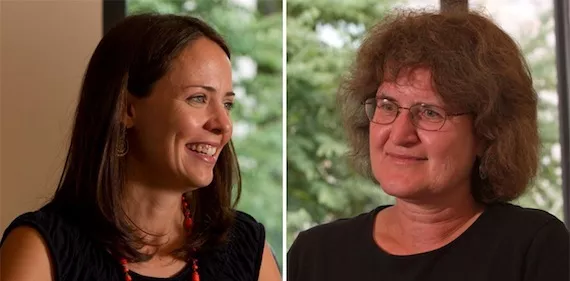Swarthmore Economists Ask: What Convinces College Students to Get Flu Vaccines?

February marks the peak of flu season for much of the nation, and the effects of this year's strain are already devastating on many fronts. While little can be done to completely eradicate the flu, individuals can protect themselves from the flu's debilitating symptoms by receiving a readily-available flu vaccination.
The same logic applies to college students and young adults, for whom the effects of the flu may be greater than previously believed. Almost every college student knows that getting sick while at school will have negative effects on their grades and social life. Yet why do so many students forgo flu vaccinations that are readily available at almost every college health center?
With the help of a $100,000 grant from the Donaghue Foundation in cooperation with the Robert Wood Johnson Foundation, Professor of Economics Ellen Magenheim, Assistant Professor of Economics Erin Todd Bronchetti, and former colleague David Huffman set out to determine what makes someone get a flu vaccination and the best ways to increase rates of flu vaccination among college students.
The research designed by Bronchetti, Magenheim, and Huffman included a large-scale study among nearly 10,000 students on six Philadelphia-area college campuses. Their goal was twofold: determine why so few students receive flu vaccinations and develop ways to increase participation for this valuable preventive health behavior.
The team's preliminary findings concluded that while there are significant barriers that prevent many college students from getting the flu vaccine, a combination of financial incentives – even as little as $10 – and peer endorsement might by the best way to increase flu vaccinations among college students.
The group established that there were three main barriers to flu vaccination participation among college students: 1) students may not know the information regarding flu vaccinations, 2) students may have the information but don't pay attention or disregard it, or 3) students may indicate they will get the vaccination but do not follow though.
"When you are trying to encourage people to get preventive help like a flu shot, it's actually very hard to get people to take action, even though doing so may be in their best interest," says Bronchetti. "We know that to be true, but we don't have direct evidence on why it's hard."
By emailing students information regarding the flu vaccine and using several mechanisms to monitor their responsiveness, the team discovered that all three of their established barriers were significant, but failure to follow through on intentions to get the vaccine was perhaps most striking. Of the control group, only nine percent got vaccinations at their college's health center, despite the fact that 25 percent of the respondents indicated that they would.
"What this shows is that simply providing information is not adequate, as not everyone will follow through with a flu vaccination even after they have been presented with its benefits," says Magenheim. "There are clearly other factors that impede taking advantage of the availability of preventive health services."
The team also conducted an experiment to test three different interventions meant to address these barriers and increase flu vaccination. These interventions - also conducted through email - included a financial incentive, peer endorsement via social networks, and making the cost of getting sick more salient (by including an audio clip of a coughing individual in the email). The experiment concluded that peer messages were most successful in delivering information about the vaccine, but a financial incentive was by far the most effective intervention to increase flu vaccinations among students. The study showed that students offered as little as $10 were twice as likely to get a flu vaccination.
Although their results are awaiting peer review, Magenheim and Bronchetti hope that their findings can be beneficial to area schools. In the coming weeks, the pair plans to share their findings with area health center directors and discuss ways to better entice students to receive flu shots and engage in other healthy behaviors.



